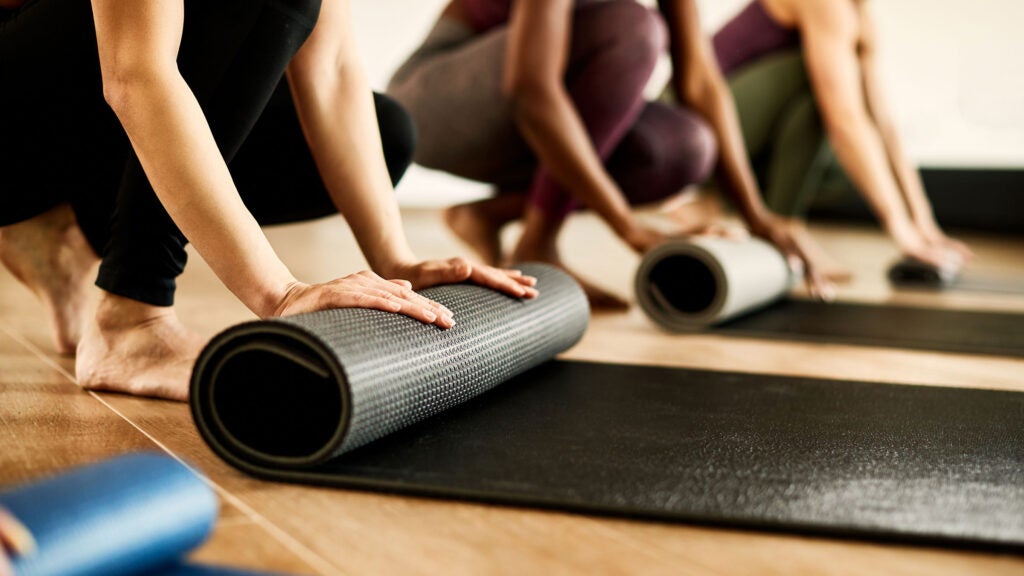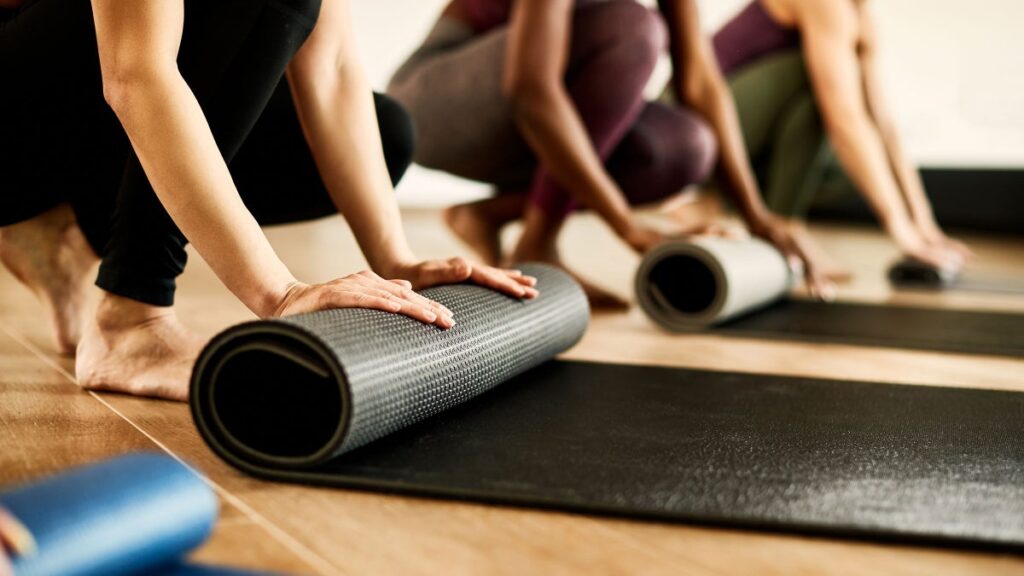
Heading out the door? Read this article on the new Outside+ app available now on iOS devices for members! <a href="https://outsideapp.onelink.me/wOhi/6wh1kbvw" class="o-content-cta-link" data-analytics-event="click" data-analytics-data="{"name":"Element Clicked","props":{"destination_url":"https://outsideapp.onelink.me/wOhi/6wh1kbvw","domain":"<>","name":"in-content-cta","type":"link"}}”>Download the app.
I finished yoga teacher training the summer before my third year of college. I was coming off of a breakup and had leaned on my practice a lot in the year prior, so it felt intuitive to lean into yoga even more, and teaching runs in my family. My mom is a group fitness instructor, and I loved seeing the community she built around her classes. It seemed like a natural next step to tap into my teaching potential for a practice that meant so much to me personally.
During training, my weeks revolved around anatomy lessons, house parties, a legal internship, and my personal spiritual exploration. I didn’t fit the mold of a stereotypical yoga teacher, but that incongruence set the stage for my next two years of teaching yoga on campus.
Teaching My Peers
Not long after I graduated from YTT, I began teaching the 7:15 a.m. vinyasa at my college gym. Since college students aren’t exactly eager to get out of bed before noon, the class was mostly attended by faculty. Professors I was accustomed to seeing in suits behind a podium showed up on their mats, sleepy-eyed and in yoga attire, looking at me to lead them through their practice. As someone who grew up watching college hockey, I found leading the head coach through yoga to be a bit of culture shock.
Amid my shakiness, I reminded myself that this was what college was about: Fake it until you make it. I repeated that mantra to myself more than once that year.
I moved on from the once-a-week sunrise yoga and started leading a 5:15 p.m. power class twice a week. I still wanted to teach more, so I hauled my mat to various corners of campus to offer classes for clubs and organizations in conference rooms, on the quad, and other makeshift locations.
Those times were fun and brought lots of experiences that likely wouldn’t have occurred in a yoga studio, like someone practicing along with class from the hallway because they arrived after the doors were shut. (I get it. Sometimes you just need yoga.) Spending hours making playlists of top hits to make yoga more appealing to reluctant students. Dropping university-specific references, anecdotes, and jokes into balancing sequences and periods of extended stillness. (Shout-out to Eagle Pose, which shares a name with my alma mater’s mascot.)
Sure, it felt gratifying to be recognized as a yoga teacher by my peers on campus (hello, external validation). But it also felt good to know I was getting the chance to share a practice that meant a lot to me with people I cared about.
Outside of the Studio
Building my “teacher voice” for yoga ultimately helped me find my voice in other arenas. I started to build confidence not only in the dated rec center studio, but in classrooms and relationships. I often collided with students at the “senior-only” bar, where they told me, while downing their third White Claw, how the flows helped alleviate test anxiety or recover from a breakup.
I knew the practice held that power for me, but I was surprised to learn that it resonated for others, whether dedicated athletes or chronic tailgaters. These former yoga-skeptics would confide how my 60-minute class had allowed them to breathe. It was a space where they had permission to rest, to sweat, and to simply be for an entire hour.
Not every class was filled with earth-shaking, life-changing moments we read about in self-help books or scroll past on TikTok. However, each class was ultimately a practice, a collection of moments, where people came together in space and time in the way that they needed. To move their body. To be with their breath. Or to just find some peace and quiet.
I’m currently a clinical psychology doctoral student, and I’ve come to see the true value of yoga for many students—a place of solace from the many stresses of the undergraduate college experience. While some folks came only to stretch before boosting their heart rate at the 6:15 p.m. spin class, others came to cope with anxiety and depression, process personal loss, and be in community.
Recent research published in Gallup’s “The State of Higher Education 2023 Report” found that two out of every five undergraduate students say they experience emotional stress in college. The college mental health crisis continues to soar, but for some students, yoga might be the very thing holding them together.
Yoga is not the solution to the mental health crisis. But even at 20 years old, I saw the power that the practice holds in a communal space. Students may have begrudgingly taken class at the invitation of their roommate or friend, or because they were looking for a stretch before spin class or after intramural basketball. But it was clear to me that a number of people left the practice experiencing the benefit of slowing down, breathing deeply, and moving freely and individually—but not alone.
I had always considered yoga to be my personal practice. But teaching yoga in college made me realize it’s so much more.
Meredith Hawkins is currently attending graduate school where she is pursuing a doctorate in clinical psychology. She teaches vinyasa flow classes at Afterglow Studio in Hartford, Connecticut.





